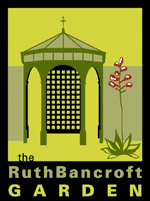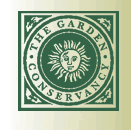
| Return to Succulent Homepage | |
Many of our native trees are handsome and well-adapted garden plants. Some of us live in areas with natural plantings of trees, but most people do not consider natives when choosing a tree for the garden. This may be an example of the "greener grass" syndrome; many native plants that are only occasionally cultivated here are very popular in England, for example. It is worthwhile growing our many beautiful natives. Most are better adapted to our climate than many exotic varieties. The California buckeye is a small tree from 20 –30 feet tall, and as equally wide. It usually branches from near the base. It has a pale gray bark that is especially striking in winter, after the leaves have fallen. The leaves are 8 inches long, and have five leaflets borne in a palmate (hand-like) arrangement. In May, The long clusters of white flowers appear at the ends of branches. The flowering period can last more than a month as new flowers continue to open. Only one or two cannonball-like fruits are formed for each flower cluster. These are 3"-4" across, and hang off the ends of branches. Inside the leathery jacket is a seed with a glossy, chestnut brown coat. These will litter the ground around the tree in late winter. Native Americans made use of the seeds of this tree. They could be crushed and added to streams to stupefy fish. After repeated leaching to remove the poison, the starchy seeds could be used for a food source. One still can find colonies of buckeyes around old Indian campgrounds. Since the heavy, round seeds are dispersed by gravity (downhill only), this human dispersal undoubtedly helped the plant to spread. In the Eastern U.S., the smaller seeds of the eastern buckeyes are carried in the pocket for good luck, but a seed of our native tree would be too large for such a use. The attractive flower clusters are visited heavily by bees (who are poisoned by the nectar!) and butterflies. These flowers make a striking display in late spring; few trees have showier flowers. Although many of the flowers are pollinated, the tree aborts most of the young fruits. The branches can support very few of the heavy fruits. The branches of this tree form undulating lines radiating from the trunk. These are very attractive when the leaves have fallen in winter. Some gardeners made good use of older specimens by lighting them at night. . The pale bark glows, and the stark, skeletal outlines of the tree are highlighted in this fashion. The seeds of this plant look like 2-3" varnished spheres with a tan circle on one end. They make superb ornaments for the house. Brought into a dry atmosphere, they will begin to shrivel in about three weeks. Displaying them in a bed of moist moss can prevent this. This will allow the seeds to sprout, at which point you can plant them in a good potting mix. California buckeyes are quite adaptable to our gardens. Once established, they need little or no extra water, but they will accept light irrigation. They will grow in shade or sun; sun-grown plants will be wider than those grown in shade. These plants are not fussy about soil, but they prefer a rich, well-drained loam. The other species of buckeye are similar plants. The commonest cultivated form is the horse chestnut, Aesculus hippocastaneum , native to the Balkans. This is a deciduous tree that grows to about 60 feet tall. Its cream flowers are the largest of the genus. They appear in early spring. This plant needs supplemental water during the dry season. The red buckeye, Aesculus pavia , is native to the Southeastern U.S. It forms a large shrub to 12 feet high and at least as wide. Its clusters of red flowers are borne in early summer. It needs regular watering and rich soil to do well in our area. The red horse chestnut, A. Xcarnea , looks like a red-flowered version of A. hippocastaneum . Nevertheless, it is a hybrid with A. pavia . Its red flowers are borne a little later than the horse chestnut. This is a good feature plant for lawns, where it receives the extra water it needs in our area. The only other west coast native is A. parryi . This small shrub is native to a small area in Baja California. It is notable in that the flowers appear after the leaves have fallen from drought. It is not commonly cultivated, but it might make an excellent small shrub for the dry garden. |
|
| Text by Dean Kelch. Illustration by Jean Russell Janish from Vol. III of Illustrated Flora of the Pacific States by L. Abrams and R. Ferris (4 Vols.), Stanford University Press . |

